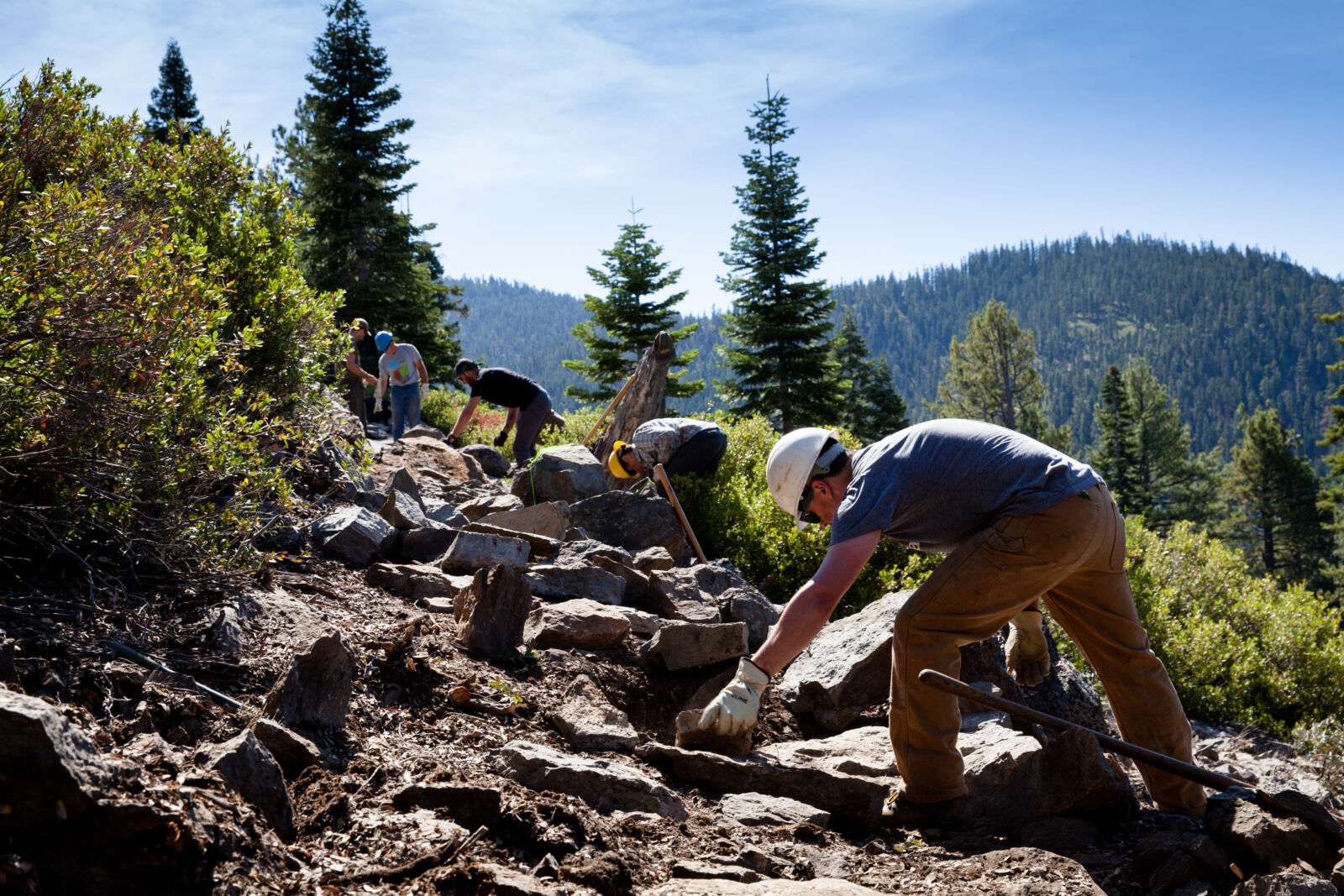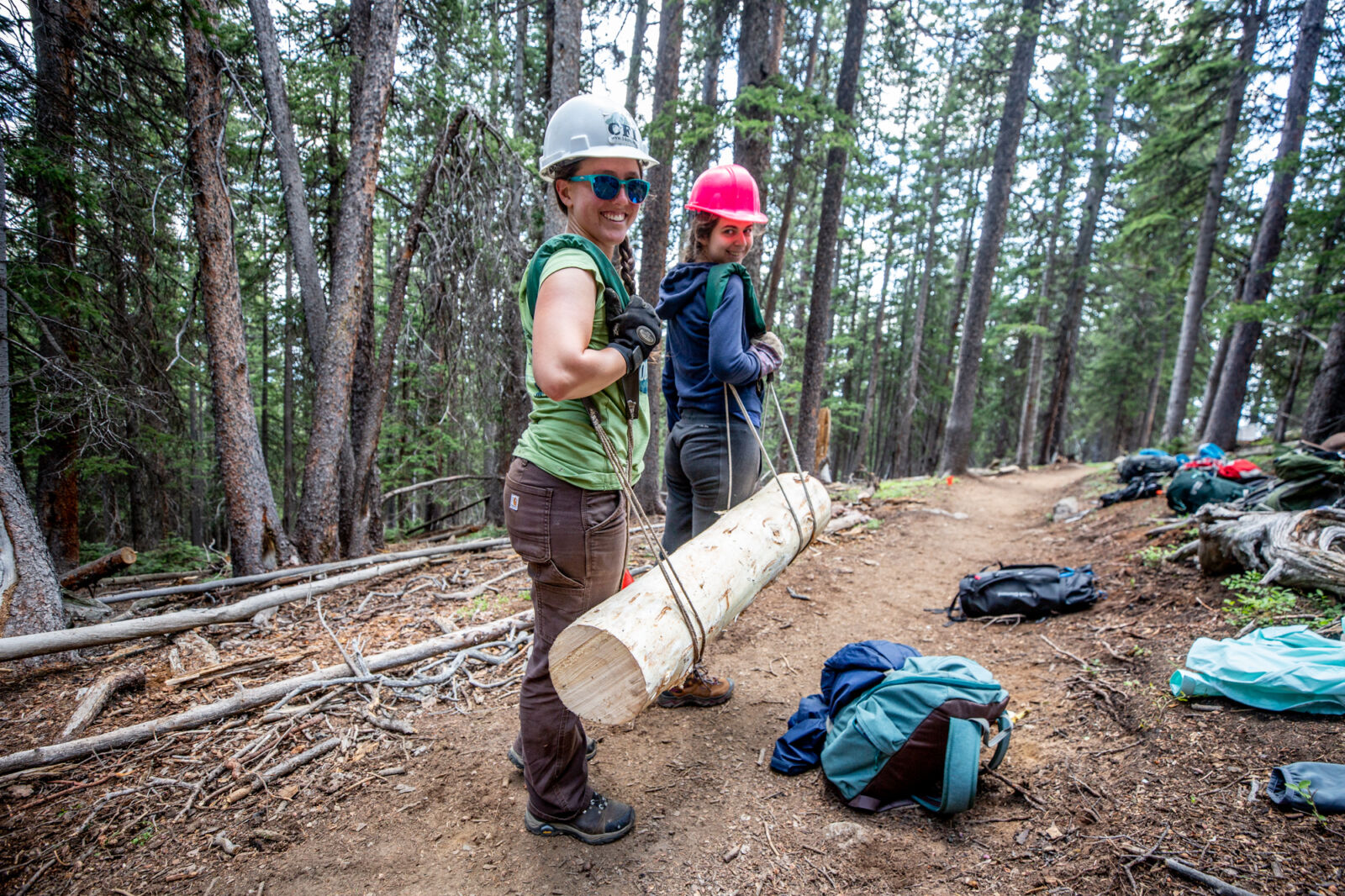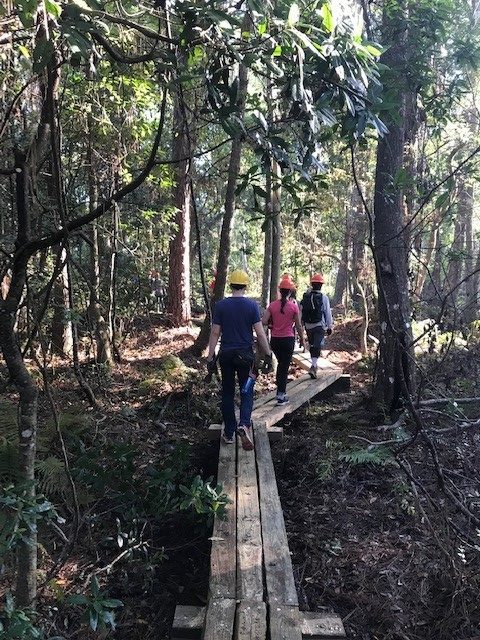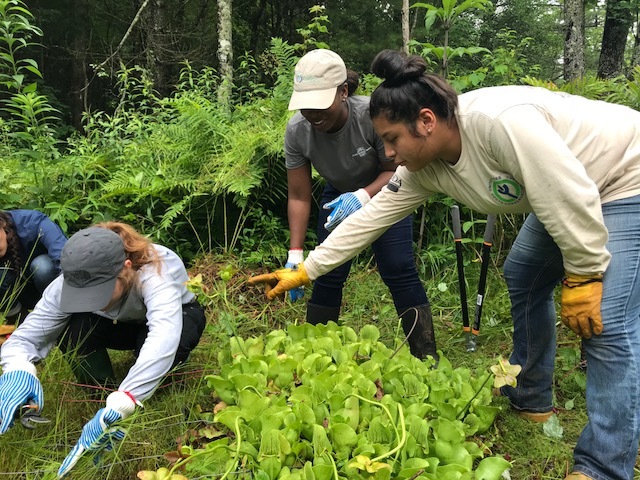In 2017, the NFF and REI launched a partnership that has made a multi-million dollar impact on our National Forests and Grasslands. The $1 million of annual funding comes from REI members who use the REI Co-op Mastercard: for each purchase transaction members make with their card, a $0.10 donation (up to $1 million) is donated to the NFF for projects that restore and build trails, improve wildlife habitat, fix trailheads and campgrounds and get underserved youth out onto their National Forests.
“In 2017 and 2018, with REI and our local partners, we’ve been able to accomplish an incredible amount of work. What’s really amazing to me is the amount of volunteer time the public has contributed to these projects. Over the past two years, Americans from all walks of life have donated more than 32,000 hours to these projects.”
In 2018, the NFF worked on 11 projects across the country. Read about our partnership accomplishments below:
Angeles National Forest / San Gabriel Mountains National Monument, California: Vincent’s Gap Trailhead and Trail Work
The San Gabriel Mountains National Monument on the Angeles National Forest is one of the most “urban” forests in the country. With 17 million people living within an hour’s drive, millions of annual visitors are drawn by the Forest’s steep peaks and abundant hiking trails. Few trailheads on the Angeles receive more visits than Vincent’s Gap, which is an access point for many of the best trails in the area, including the Pacific Crest Trail.
In 2018, we hosted a volunteer day at Vincent’s Gap where locals pitched in to maintain eight miles of trails and spruce up restrooms and fencing. In addition to this trail work, in 2019 we will complete a major upgrade to the trailhead itself. We will improve parking and facilities, and install multi-lingual signage.
Tahoe National Forest, California: Big Chief Trail
California’s Tahoe National Forest is truly spectacular. Anchored by the sparkling blue Lake Tahoe and offering nearly a million acres of forests, mountains and creeks, the Tahoe is a renowned destination. And now, thanks to our partnership with REI and the Truckee Trails Foundation, users have a new seven mile multi-use trail to enjoy.

Austin Price
The new Big Chief Trail is open to hikers, trail runners and backpackers, but mountain bikers are the ones who will benefit the most. With berms, stunt options, log rides and more, the trail tests the skill of even the most advanced riders, while offering easy ride-arounds for those seeking a tamer experience. Early online reviewers are positive and indicate that this trail will soon become an area classic.
White River National Forest, Colorado: Quandary Peak
Quandary Peak is one of Colorado’s most climbed peaks, often the first Fourteener hikers tackle. In this second year of work on Quandary, crews completed all of the trail work we had prioritized for Quandary thanks to REI and an amazing cadre of 282 volunteers who contributed more than 2,760 hours to the project. The 1.75 miles of trail the crews built took a Herculean effort due to the elevation, short work season and near constant foot traffic. The crews noted that they interacted with more than 16,000 hikers over the season, sharing Leave No Trace principles and discussing the project.
PIKE-SAN ISABEL NATIONAL FOREST, COLORADO: MT. ELBERT
Towering above all of Colorado’s Fourteeners (peaks more than 14,000 feet in elevation) is Mt. Elbert, Colorado’s tallest peak. In our second year of REI-supported work on Mt. Elbert, we completed our work on the South approach to Mt. Elbert. Eight partner groups, 267 volunteers and 42 youth worked to repair 3.55 miles of trail.

photo by Kellon Spencer Photography
Trail building in the high-alpine is no easy task, and the groups worked tirelessly quarrying and carrying rock for steps and check dams, restoring fragile alpine habitat and filling in eroded social trails – all above treeline.
Pike-San Isabel National Forest, Colorado: Pikes Peak
Pikes Peak is one of America’s most recognized mountains. A railroad and auto road climb to the top, but many choose to make their way on foot, via one of several trails to the summit. The Devil’s Playground Trail (aka Crag’s Trail) is one of the most popular, and degraded, routes.
In 2018 we improved 1.6 miles of the most degraded sections of the trail. Thirty-six volunteers and 18 youth helped out with the project, installing 132 drainage structures and filling in eroded and incised trail tread. This difficult and back-breaking work required more than 1,500 volunteer hours over the course of the summer. With ambitious plans to accomplish on Pikes Peak, we are excited about the progress we made this year.
OCALA NATIONAL FOREST, FLORIDA: FLORIDA SCENIC TRAIL AND OTHER TRAIL PROJECTS
The Ocala National Forest in central-Florida is a semi-tropical paradise that is home to black bears, bald eagles, manatees, and more. When Hurricane Irma slammed into the Ocala in late 2017, it flooded campgrounds, picnic areas, and damaged the Ocala’s vast trail network, making it dangerous and difficult for visitors to access these amazing public lands. Helping this area recover from the hurricane was important to REI and the NFF.
While humanitarian relief is always the most important step in helping communities recover from natural disasters, it is also necessary to restore the outdoor recreation infrastructure to support the local economy, help restore access to residents who use the area, and to limit detrimental ecological impacts. Through our partnership, we tackled trail-work on three of the Ocala’s most popular trails, including the Florida National Scenic Trail.

Because the Ocala is such a low-elevation forest, much of the work concentrated on replacing “puncheon” (elevated boardwalks) that allow hikers to traverse boggy areas without damaging the sensitive wetland ecosystem or ruining their hiking boots. Along with trail crews, 32 volunteers repaired 20 miles of trails and 2 trailheads. We appreciate the opportunity to help the Forest and the nearby communities continue the long recovery following such a ferocious storm.
Chattahoochee-Oconee National Forest, Georgia: United Keetoowah Band Youth Corps
For the second year, REI Co-op MasterCard Holders’ support has brought native Cherokee youth from Oklahoma to their ancestral homeland in Georgia for a summer youth corps program. The youth again helped to restore trails (3.5 miles), fix up four campsites and restore and monitor wildlife habitat (including 30 acres of sensitive wetlands with endangered pitcher plants). They also had a unique opportunity to work with an archeologist to excavate an ancient native homesite. This gave them first-hand knowledge about their Cherokee ancestors who lived on this land before the indigenous nations from this part of the country were forced to move to the Midwest.

This comprehensive program gets the youth out into nature, learning about conservation and STEM careers, restoring our public lands, and learning through first hand experiences about their homeland.
Sam Houston National Forest, Texas: Restoring Trails After Hurricane Harvey
As more than 95 percent of Texas is private land, the state’s limited public lands are especially critical. The Sam Houston National Forest, just 30 minutes from Houston, is one such example. When Hurricane Harvey devastated southern Texas in 2017, it also wreaked havoc on the Sam Houston’s trails and campgrounds. This is another National Forest that REI and the NFF thought important to invest resources in towards recovery.
Working with the Forest Service, we’ve identified priority trails and campgrounds to repair. To date, we’ve repaired more than 40 campsites and restored one mile of trail. Nine volunteers gave more 1,800 hours of their time to this work. But when Hurricane Florence slammed into South Carolina in 2018, the crew implementing the work was diverted to help those storm-ravaged communities with more emergent needs. As such, we’re behind schedule and will be completing this work early this year. We’re excited to complete our work so that Texans can once again access their precious public lands.
George Washington-Jefferson National Forest, Virginia: Restoring Wilderness Trails with SAWS and the Naval Academy
The George Washington-Jefferson National Forest (GWJ) welcomes visitors from Washington, DC, Virginia and the entire mid-Atlantic. This sprawling landscape of dense deciduous forests is also home to a number of small Wilderness Areas that offer hiking, solitude and respite just a few hours from the nation’s capital. Through a unique partnership with the Southern Appalachian Wilderness Stewards (SAWS) and the Naval Academy, we brought a crew of four midshipmen and two SAWS crew leaders to address long-deferred trail maintenance on the GWJ’s wilderness trails.

The crews worked with 22 dedicated volunteers to maintain 8.1 miles of trail, some of it so overgrown it was nearly impossible to find in the thick forest. The crews installed 84 water control structures, removed 36 trees from the trail with hand tools, decommissioned two unauthorized campsites and built 25 rock steps or check dams. The opportunity provided both wilderness experience and leadership skills to the midshipmen, who led the volunteers to complete 1735 hours of stewardship work.
Monongahela National Forest, West Virginia: Spruce Knob-Seneca Rocks National Recreation Area Trail projects
West Virginia’s Monongahela National Forest is a heavily visited forest that sits a few hours from millions of Americans in the mid-Atlantic. One of the best known areas of the Monongahela is the Spruce Knob-Seneca Rocks National Recreation Area. The area is popular with rock-climbers from around the country, but these public lands also offer great hiking and backpacking opportunities.
With four partners, including several youth crews, we repaired nearly 19 miles of trail, obliterated a mile of social trails, installed more than 150 trail drainage structures, restored an acre of wildlife habitat and met with hundreds of hikers.
Mt. Baker-Snoqualmie National Forest, Washington: Artist Point Trail and Trailhead projects
For epic views of the majestic North Cascades, you’ll be hard pressed to find a better spot than Artist Point on the Mt. Baker-Snoqualmie National Forest. This popular viewpoint offers access to all abilities, but overuse had deteriorated the trail and impaired the safety and ecological condition of the habitat around it.
We worked with the Forest Service and local contractors to restore the trailhead and shore up the trail with extensive rockwork, retaining walls and more. We are excited that a new ADA-accessible trail surface (which will be installed in 2019 when weather permits) will ensure that anyone can take advantage of the incredible vistas this site provides.

